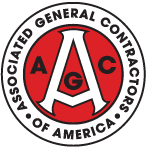In all industries, companies today are seeking to boost their profitability, meet regulatory obligations and perk up business effectiveness; the construction industry is not off the hook. Being multifaceted and compound, construction project has many stirring divisions and is particularly reliant on third parties to meet-up their contract commitments. There is no similarity or identical characteristics attached with any two different projects.
The most noteworthy routine risks facing the industry concerns the technology constraints, scope creep and changes in schedule that often bring about cost and budget overruns. Unlike the weather or the economy, these specific factors of risk are within the direct control of a company to diverse degrees.
Employing a successful and continuing process of risk assessment is vital to practically dealing with risks. Such a process have been taken into consideration and employed by the majority of companies today; however, they have been unsuccessful in going ahead and putting into practice an effectual strategy of mitigation. Consequently, associates always take a step back and are intransigent to unanticipated revelations.
Implementing an effectual mitigation strategy helps in shifting operations to proactive mode from the initial self of being reactive. It’s vital to plan for and deal with risk factors linked with in scope and schedule changes that sneak in the beginning of a project. A successful project includes a pragmatic schedule, expectations agreed-upon between third-party providers and firms, and a comprehensible scope of project. Apparent measures ought to be consigned and communicated in measuring the risk level inbuilt in a specific project. Complete, timely and accurate information as regards the project’s status permits the team of risk management to evaluate and act in response suitably when required.
A project’s budget and schedule can be directly influenced by third-party subcontractors that are unable to meet up labor demands, are not fiscally sound, or are deficient of the experience in the type of assumed work. The first step is continuing due conscientiousness in the range of business subcontractors and partners. Time and again contracts provide timelines, quality expectations and scope of work, however they fall short in including sufficient performance detail to be effectively gauged against key indicators of performance. Furthermore, contracts ought to contain words around penalties and enforcement if expectations aren’t met. Risk management strategy entails more than the use of simple checklists.
A risk management advisor can help the company by carrying out a meticulous risk appraisal or by assessing the existing method adopted that is adjacent to the paramount practices. Moreover, an advisor can aid in third-party seller audits to establish if only allowable costs were riveted by projects’ respective budgets.










